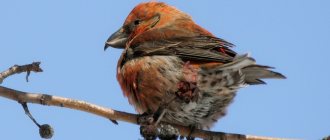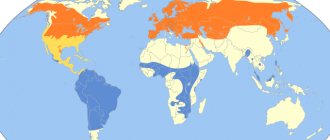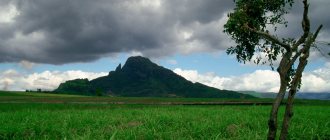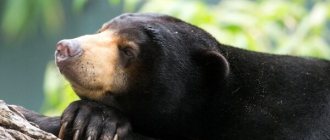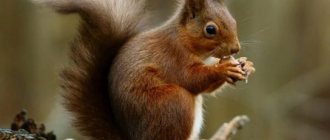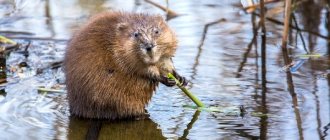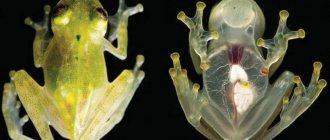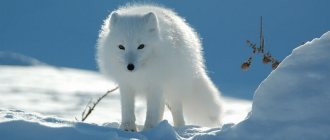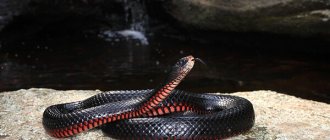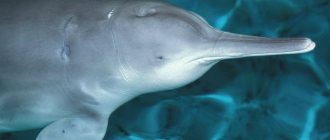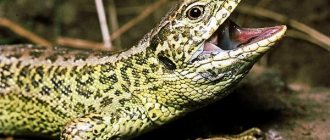Origin of the species and description
Photo: Sparrowhawk
This bird is from the genus of true hawks of the family Accipitridae and the order Accipitridae. It took mankind a century and a half to rewrite all subspecies of the sparrowhawk. They differ little from each other. There are minor differences in size and color.
Scientists have described six subspecies:
- Accipiter nisus nisus lives in Europe, as well as in the triangle between the Ural Mountains, Siberia and Iran. It received its name in 1758. First described by Carl Linnaeus.
- Accipiter nisus nisosimilis inhabits Central and Eastern Siberia, Japan, China and Kamchatka. Described in 1833 by Samuel Tickel.
- Accipiter nisus melaschistos lives in the mountains of Afghanistan, the Himalayas, Tibet and Western China. Described in 1869. Allen Octavius Hume did it.
- Accipiter nisus granti chose the Canary Islands and Madeira for residence. Recognized as a subspecies in 1890 by Richard Bowdler Sharp.
- Accipiter nisus punicus is the smallest of the sparrowhawks. It lives in northwestern Africa and northern Sahara. It was described in 1897 by the German baron Carlo von Erlanger.
- Accipiter nisus wolterstorffi breeds in Sardinia and Corsica. Described in 1900 by Otto Kleinschmidt.
Northern subspecies go to the Mediterranean and North Africa for the winter.
Appearance and features
Photo: Sparrowhawk bird
The sparrowhawk has a sharp, sonorous voice. But hearing a predator is quite difficult. Ornithologists and naturalists sit in ambushes for hours. It is possible to record a bird's voice only during hunting and mating season. Unlike its large relatives, Accipiter nisus does not attack small animals. The subject of his hunt is always birds.
Female sparrowhawks are almost twice as large as males. The weight of the average male is 170 g, while the female is 250-300 g. Short wings and a long tail provide maneuverability to the bird. The female’s wing does not exceed 22 cm in length, the male’s – 20 cm. The body is on average 38 cm. Males have a contrasting color. Gray above, white below with a brown pattern and a characteristic reddish tint. The cheeks of males are also colored red. Both males and females have a clearly visible light eyebrow.
Sparrowhawk video:
The female is distinguished by a brown color on top. Below it is white with dark brown stripes. Females, unlike males, completely lack red in their plumage. In both females and males, 5 transverse stripes are clearly visible on the tail in flight. The bodies have wavy stripes. It feels like the bird is wearing armor.
Juveniles differ from adults in the depth and brightness of their color. Young birds have virtually no white color in their plumage. They are distinguished by an unusual plumage pattern - heart-shaped spots are noticeable below. Sparrowhawks have three conspicuous yellow spots against the overall coloration. Their eyes, legs and base of beak are canary yellow. The beak is small, the head is rounded.
Interesting Facts
The wingspan of an adult hawk can reach 1 meter
- The origin of the word hawk in different languages is associated with the definitions “sharp”, “sharp”, “fast”, “fast-flying”, which indicates the character and lifestyle of the bird.
- In many mythologies and legends of the peoples of the world, hawks, along with eagles, were considered messengers of the gods. The inhabitants of Ancient Egypt worshiped the image of a hawk, because they believed that its eyes were a symbol of the moon and the sun, and its wings symbolized the heavens. Slavic warriors placed the image of a hawk on their banners as a symbol of courage, power and absolute ruthlessness towards enemies.
Where does the sparrowhawk live?
Photo: Male Sparrowhawk
The range of the sparrowhawk is unusually wide. Birds of this species are found in Siberia, the Far East, Europe, Afghanistan and even in such inaccessible places as the Himalayas and Tibet. Some subspecies chose to live not on the mainland, but on the Canary Islands, Madeira, Sardinia and Corsica. Representatives of this bird species have settled even in Africa.
Not all sparrowhawk subspecies are migratory. Birds living in the European part winter in the Mediterranean region, the Middle East, as well as Japan and Korea. They remain in their habitats all year round and have well-stocked nesting sites. The migration routes of small hawks are closely connected with the habitats of small birds, which this predator feeds on. Going for the winter, hawks fly through the North Caucasus, Iran and Pakistan - the only territories where hawks feed on quails, which are found there in abundance. This creates greenhouse conditions for migrating predators to rest and feed.
Interesting fact: The sparrowhawk got its name due to man's passion for the popular hawk-hunting of quails. In nature, a hawk rarely has the opportunity to hunt this bird.
The sparrowhawk settles in a wide variety of places. It can be found both in forests and steppes, and on the outskirts of cities. He lives easily in the mountains. Quail hawk nests are found at an altitude of 5000 m above sea level. Its favorite places are rare deciduous forests, floodplains, steppes, valleys and deserts.
Buzzard
Very large birds, having about 80 forms, divided into 10 genera. Buzzards can be found on all continents except Australia. There are two genera in our country, which can be distinguished by the appearance of their metatarsus. It may have feathering up to the very fingers in the front part or a plate-like covering of uniform height. In addition, the buzzard's tail is much shorter than its wing - 2/3 of the length.
This species of hawk feeds on gophers, mice and other rodents, which are the main pests of bread and other crops. Tracking prey takes place while smoothly circling in the air or waiting motionless on a tree. This species of hawk especially likes to hide in haystacks. In a slow and calm flight, sometimes you can notice 2-3 individuals at once, which emit a peculiar cry, reminiscent of a hissing whistle.
Buzzards most often live in pairs and fly away for the winter in September - October. Unfortunately, despite the general benefits of these birds, they are being intensively exterminated, even more actively than harmful representatives. This is explained by the illiteracy of hunters, who often use easy methods of hunting birds and the similarity of buzzards with other species of hawk. However, experienced birders and hunters quickly distinguish these birds even at a great distance.
What does a sparrowhawk eat?
Photo: Female Sparrowhawk
The sparrowhawk is an ornithophage and feeds on live food. He hunts small birds. The menu includes sparrows and tits. Loves to eat finches and thrushes. Hunts wood pigeon, pigeons and even woodpeckers. The prey of a female quail hawk is sometimes twice its size. There are cases where hawks hunted hazel grouse and crows.
Interesting fact: The sparrowhawk usually hunts during the day. At night the bird rests. However, there are cases when the hawk lingers on the hunt until dusk, and then small owls and bats appear in its diet. Young birds are especially guilty of this.
The sparrowhawk's diet depends on migration and the time of year. Its diet can be determined by where it is plucked. Before eating, the sparrowhawk cleans its prey of feathers. Feathers and food debris can be used to judge the bird's diet. The diet largely depends on the time of year and the territory through which sparrowhawks migrate. In the spring, ornithologists find the feathers of dawn, tit and starling in the pluckings.
Although it is generally accepted that sparrowhawks hunt exclusively birds, there are known cases of hunting small rodents and frogs. As scientists note, about 5% of the sparrowhawk's diet consists of small rodents and amphibians. During migration across the Baltic, birds attack young gulls, and island sparrowhawks attack parrots.
The sparrowhawk is not averse to feasting on poultry. Due to the fact that the hawk is not afraid to settle near people, private farms suffer. More than 150 food ingredients were found in experimental feeders set up by ornithologists. An adult sparrowhawk eats more than 1,000 small birds per year. The sparrowhawk's menu also includes insects and acorns.
Top Menu
The category of harmful birds conventionally includes bird species representing completely different systematic groups. They are united by one common feature - harmful activities in hunting. The gray crow inhabits the European part of the Union and Western Siberia to the Yenisei, the black crow inhabits eastern Siberia and the Far East, the large-billed crow lives in the Amur region, Primorsky Krai and Sakhalin. All these crows, during the period of feeding the young, mercilessly destroy the nests of beneficial birds, peck at the eggs and carry the chicks. They also attack rabbits. The large-billed crow is even capable of killing young seals and roe deer by pecking out their eyes and piercing their skulls.
To a lesser extent, but also significant damage to the hunting industry is caused by the common magpie.
Seagulls of medium and large sizes feed throughout their lives on vertebrates: mice, chicks and eggs of other birds, fish and sea waste. In general, their harmful activities are not so significant, but in hunting farms a high number of these birds is undesirable.
Diurnal harmful predators include the goshawk, sparrowhawk and marsh harrier (Fig. 27, a, b, c). Goshawks destroy many gallinaceous birds, hares, wild ducks and large waders; sparrowhawks - useful passerine birds, small gallinaceans, waders, ducklings, teals; marsh harriers - they destroy waterfowl and marsh game in large numbers, and during the nesting period the game feeds mainly on their eggs and chicks.
Peregrine falcon, gyrfalcon, saker falcon, golden eagle, white-tailed eagle (Fig. 27, d, e, f, g) (also long-tailed and Pacific, or Kamchatka) eagles and eagle owl (Fig. 27, c) can also cause damage useful animals. However, all these predators are so rare that their complete extermination is out of the question.
| Rice. 27. Birds of prey harmful to hunting: a - goshawk; 6 - sparrowhawk; c - marsh harrier; g - peregrine falcon; d - gyrfalcon; e - golden eagle; g - white-tailed eagle; 3 - eagle owl |
Predators that bring both benefit and harm include the great buzzard, or rough-legged buzzard, black and red kites, steppe and imperial eagles. All of them eat a lot of harmful rodents, along with this they can tear apart a hare and ruin the nest of a useful bird. Kites in some places cause harm to domestic poultry farming. In the steppe regions, they are considered rather useful species, as they destroy rodents. Among the falcons, this group includes the merlin and the Hobby, which, while preying on useful birds, destroy small rodents in significant numbers and eat many harmful insects. This also includes the bearded vulture, which, although it feeds mainly on carrion, in some cases causes harm by knocking young chamois, aurochs and other animals off the rocks.
The group of economically indifferent species includes: the snake eagle or karachun, the hawk buzzard and the osprey.
All other diurnal predators - meadow harrier, steppe and piebald, dwarf eagle, greater and lesser spotted eagle, common buzzard, or common buzzard, steppe buzzard, or buzzard, honey buzzard, common kestrel, steppe kestrel, falcons and some others are useful birds, as they destroy a large number of small rodents and harmful insects. Beneficial species also include the vulture, black vulture and griffon vulture - as orderlies.
As for nocturnal predators - owls, they certainly belong to the number of useful species, since they mainly feed on small rodents. Only large owls can be considered relatively harmful - the snowy owl, the eagle owl and the great owl, as they often attack game animals.
All harmful birds have their own characteristic features, by which they can be distinguished from beneficial predators.
| Rice. 28. Silhouettes of birds of prey in flight: a - hobby; 6 - peregrine falcon; c - kestrel; g - coccyx; d - sparrowhawk; e - goshawk; zh-z - marsh harrier; and - kite; k - buzzard or buzzard; l—buzzard; m - osprey; n - eagle |
Thus, all falcons are well recognized by the frequent rhythmic flapping of their wings, alternating with short gliding intervals. When attacking prey, falcons fall from above with half-folded wings. But they grab their prey from the ground. In calmly flying falcons (hobbies and peregrine falcons), long pointed wings and a relatively short and narrowly spread wedge-shaped tail are clearly visible (Fig. 28, a, b).
Features of character and lifestyle
Photo: Sparrowhawk in winter
The hawk does not leave the battlefield and does not leave the fight without prey. He is not disturbed by the hubbub of the fear-raised flock. He uses bird panic while hunting. The sparrowhawk, unlike other birds of prey, does not hover in the air when stalking prey. He is a master planner. Using its open tail, it floats in the air for quite a long time.
Interesting fact: Due to the imbalance in the size of birds in a pair, males hunt small prey, while females prefer larger ones.
Has high intelligence. Communicates with a person. It is easily tamed and trainable. An excellent hunting companion. This feature of the quail hawk is glorified in poetry and prose. The quail hawk has been a favorite hunting bird of many peoples since the Middle Ages. In Rus' the bird was called a small hawk. He was traditionally trained to hunt quail. That is why the name “sparrow hawk”, known in Europe, did not take root in Russia.
The hunting style is determined by the anatomical features of the hawk. Short wings allow you to maneuver among the foliage of trees and not slow down. The long feathery tail provides high maneuverability. This allows the bird to hover for a long time while looking for prey.
Interesting fact: Sparrowhawks have stable, long-term families and nests. In case of danger, the hawk couple does not leave the place, but raises the nest higher. Dismantles the old and builds a new one from existing building materials.
Meadow Harrier
The meadow harrier is similar in size and color to the field harrier, but the male meadow harrier has clearly visible black stripes on its wings.
Compared to other harriers, their flight is usually slower and smoother. In spring, this species arrives a little later than the others and usually returns to its previous nesting sites.
They make nests in open spaces in tall grass, most often in nettle thickets. They hunt mouse-like rodents, some reptiles and large insects. They are also a migratory bird species.
Photo: mos.ru
Social structure and reproduction
Photo: Sparrowhawk
By the end of the first year of life, birds complete the cycle of puberty and are ready for the first clutch. The courtship period ends with the creation of a stable pair. Alliances last for decades. Some families have several nests at once. Scientists have noticed that this species “moves” from one nest to another. They are used as needed, depending on weather and natural conditions.
Hawks build a fairly deep nest at a height of 10 meters or more. There have been cases where hawks raised the nest higher from year to year. This behavior of birds is due to outside interference. Egg laying occurs at the very end of spring and beginning of summer. However, there are cases when the laying is completed by the end of April. On average, a pair lays 5 eggs. Ornithologists note that clutch sizes have recently decreased. It is believed that the reduction in the number of eggs is influenced by the environmental situation.
The color of sparrowhawk eggs is predominantly white. The chaotic pattern of burnt brick color camouflages them from larger predators. In building nests, quail hawks use only dried twigs and grass, and feathers from plucks. The place for laying is deep, well protected from prying eyes, wind and rain.
Interesting fact: During breeding, the female becomes aggressive. There are known cases of quail hawks attacking people. In Ryazan, an ornithologist was subjected to aggression from a couple who settled next to a residential area.
Egg incubation lasts 30 days. Once completed, the chicks appear. Laying is not always effective. As ornithologists note, in the last decade the viability of the clutch has been 70-80%. If the clutch dies, sparrowhawks organize a new one. Sometimes chicks of different ages are found in nests.
Peregrine Falcon
The peregrine falcon is a densely built bird larger than a crow. The species is characterized by a relatively short tail and sharp long wings, which make its flight very swift. The upper part of the body is colored dark, the feathers of the lower part, on the contrary, are light. The head is black, with black oblong “whiskers” clearly visible on the sides.
The peregrine falcon's diet mainly consists of small birds, mainly waders, ducks, thrushes and corvids. Within the city limits he hunts pigeons. It usually dives at prey from above, developing speeds of up to 300 kilometers per hour. In nature, it can nest in old nests of other birds, in rock ledges. However, it is rare in Moscow. Several nests have been observed in buildings and residential buildings.
Photo: mos.ru
Natural enemies of the sparrowhawk
Photo: Sparrowhawk bird
The sparrowhawk's natural enemies are larger birds of prey. The goshawk never misses an opportunity to hunt its smaller brother. To protect themselves from such threats, sparrowhawks do not build nests in the vicinity of goshawks, maintaining a nesting distance of about 10 km.
Cases of attacks on sparrowhawks by hooded crows or pigeons, which, united in a flock, attack hawks, have been described more than once. Group attacks on sparrowhawks can be observed in suburbs and rural areas, where birds settle close to human habitation in search of food. Multiple flocks of passerines attract hawks. But the hawk does not always manage to make easy prey. Well-organized groups not only repel hawk attacks, but also drive the predator far from the nesting site.
The natural enemies of sparrowhawks are felids. They plunder nests with newborn chicks and young birds.
People also create conditions for the reduction of bird populations:
- Changes in the environment due to human activity.
- Reduction of natural bird habitats.
- Deforestation, plowing fields, housing construction and industrialization.
- Deterioration of the ecological state of natural hawk settlements.
- Construction of highly toxic industries that pollute the bird's habitat, reduce the food supply, and affect the ability to reproduce.
- Catching birds for training and sale.
- Barbaric methods of protecting private poultry farms from hawks.
Hobby
This is a medium-sized long-winged and long-tailed falcon. The coloration resembles a peregrine falcon, but is much smaller in size. The chest and belly are covered with longitudinal dark spots. In adult birds, the feathers under the tail are colored reddish-orange.
Hobby is one of the best feathered hunters. Thanks to its fast and maneuverable flight, it can catch large insects and small birds in flight.
Occupies old nests of birds of prey and corvids. Usually chooses those that are high above the ground, in the crowns. Ecologists found nesting grounds of Hobbies in the natural and historical parks “Izmailovo”, “Bitsevsky Forest”, “Moskvoretsky”, the “Kuskovo” forest park and others.
Photo: mos.ru
